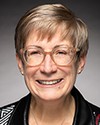Mr. Chair, I could answer that question.
Basically, for us, a full inspection, a full examination, or a complete screening would include, as the president said earlier, the swiping of a passport, which would ensure that the information is placed as a record in what we call our “integrated primary inspection line”.
What the OAG found was that sometimes the record of a licence plate that was read—because we also have licence plate readers at all our land ports of entry—didn't match up with the swiping of the passport, for example.
A full screening would include perhaps a licence plate reader, the swiping of a passport, and potentially a referral to secondary, if there was a target, a lookout, or something of an anomaly that referred you to secondary. That whole thing would then be closed up with some remarks by the border services officer, depending on whether or not you were referred to secondary.
In the cases where they stated that about 2% of that population was not seen by a service officer, what we are stating is that they may have potentially been seen, but what may have happened is that the full record was not completed. The licence plate reader did indeed find a vehicle and did make a record of the vehicle, but the officer did not follow full policy, as the OAG found, not completing the record by making a full reconciliation. There are various reasons why that could happen. It does happen, unfortunately.
As the president said, our intent is to ensure that the policy that is in place continues to be properly adhered to. Although they did not complete the full swiping of a passport, that doesn't mean they didn't at least have a conversation or the person was not seen by a border services officer.




